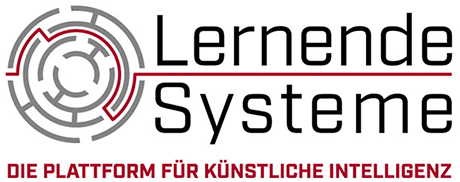Modules for Change Management when introducing AI Systems in Companies
Ein Expertenbeitrag von Sascha Stowasser, Institut angewandte Arbeitswissenschaft und Mitglied der Plattform Lernende Systeme
Artificial intelligence (AI) offers great potential for companies and their employees – whether through improved work processes and relief or digital business model innovations. At the same time, the change in companies must – and can – be shaped together and the challenges in the use of AI systems must be solved. This is the only way to overcome challenges and negative side effects in the use of AI systems. The overall aim is to create a new relationship between humans and machine, in which people and AI systems work together productively and the respective strengths are emphasized.

Change management is a decisive factor for the successful introduction of AI systems as well as the human-centric design of AI deployment in companies. Good change management also promotes the acceptance of AI systems among employees, so that the potential of the new technologies can be used jointly by all those involved, further innovation steps can be facilitated and both employees and their representatives can shape technological change. The participation of employees and their representatives significantly contributes to the best possible use of AI systems and the interface between people and machine – especially in the sense of efficient, productive and health- and learning-promoting work organization. Early and process-oriented participation of employees and co-determination representatives is therefore an important component for the human-centred design and acceptance of AI systems in companies.
We are still at the beginning of a transition phase to AI technologies and companies have the opportunity to sound out opportunities and potentials as well as risks and challenges of AI systems in good time and to discuss design options so that the use of AI benefits the economic success of the company as well as the good work and the personal development of the employees. It is now necessary to make targeted use of this possibility. The aim of this article is to raise awareness of the requirements of change management in artificial intelligence and to provide orientation for the practical implementation of the introduction of AI systems in the various phases of the change process. These practice-oriented requirements are aimed at all stakeholders who are involved in change processes and are intended to provide orientation for the successful introduction of AI systems in companies. In addition, these requirements should also inspire the further development of existing regulations - for example in legislation, social partnership or standardization - and thus enable employment-oriented, flexible, selfdetermined and responsible work with AI systems and promote the acceptance of AI systems.
The paper shows the possibilities as well as concrete solutions and best practice examples of how AI systems can be introduced successfully and in the interests of the employees in the company. The challenges and design options for companies are based on the phases of the change process: starting from the goal setting and impact assessment, planning and design, preparation and implementation, right through to evaluation and continuous adaptation, starting points are formulated that are specific to companies - explicitly too to small and medium-sized companies - and those responsible in the companies as well as to employees and their interest groups as well as management. The involvement of employees and their representatives in every phase of change management is a central interface for a successful transformation process: Solutions can be designed and adapted in the best possible way based on the reality of the workforce in order to ensure acceptance of the use of artificial intelligence, to achieve changes in work organization or in the handling of personal data.
Beitrag erschienen in:
Work2021/Abstract Book
Dezember 2021
